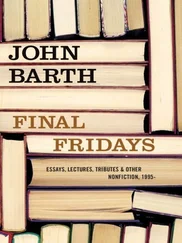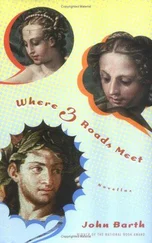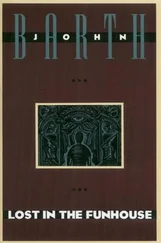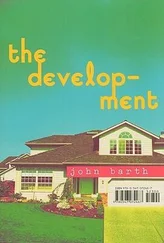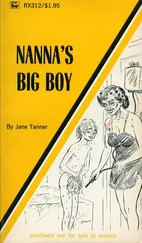"May I speak frankly, sir?" I asked. "Presumptuous as it may seem to you, I do have a suggestion to make, and then I'd like to ask your advice about repairing this clock…"
His pink eyes rolled behind the glasses. "You lost your mind, Goat-Boy?"
I showed him my Assignment and told him how I'd come by it. "If it says to fix the clock, then the clock must be broken, mustn't it? I believe you told me WESCAC always reasons correctly."
Very much concerned, Dr. Eierkopf affirmed that the computer was normally incapable of faulty reasoning; he pointed out, however, that in the absence of any actual malfunction in the works, to speak of Tower Clock's being inaccurate was to speak unintelligibly, as who should accuse the Standard Meter of being short.
"But you told me yourself last night that the clock needed working on," I reminded him, adding that my own selfwinding watch (by which term I meant, innocently, that I wound it myself) showed a different hour, whereto with his permission and Croaker's help I'd thought to make Tower Clock conform.
"Don't talk so!" Eierkopf cried. "You don't touch anything! It's bad enough Croaker, he's such a clumsy!" He squinted at my Assignment-list again, this time through his lens, and suddenly clapped his hands. "I got it, Goat-Boy!"
Croaker dropped from the rafter at once, mistaking the signal, and lifted Dr. Eierkopf onto his shoulders; the scientist was too pleased with his new idea to protest.
"It says Complete in no time, ja? So: the clock's not kaput, it takes you no time to fix it! You're done already."
This reasoning, though I could not refute it, satisfied me less completely than it did Dr. Eierkopf, who declared it at once a fulfillment of my task, an explanation of the troublesome due-date of my Assignment, and a vindication of WESCAC's "malistic" dependability. To my inquiry, Why was he himself tinkering with the clockworks if no repairs were needed? he replied that standards of reference were sometimes improvable though never logically subject to challenge; thus the University Standard Meter, for example, was originally one ten-millionth of the campus's quadrant, later the distance at 0 °Centigrade between two particular scratches on a platinum-iridium bar in the Intercollegiate Department of Standards, and presently one million five hundred fifty-three thousand one hundred sixty-four and thirteen one-hundredths wave-lengths of red light from the element cadmium. In like manner the accuracy of Tower Clock was from time to time improved — though only by comparison to its own past accuracy, never ("… Q.E.D., Goat-Boy…") by comparison to the accuracy of other timepieces. Current work in the field, I was told, centered around escapement-theory, and had led to opposing points of view. One group of researchers (whom Eierkopf referred to contemptuously as "Everlasting Now-niks") would abolish all forms of escapement in favor of what they — or their detractors — called "tickless time"; the other, led by Dr. Eierkopf, hoped with the aid of special lenses and micromilling techniques to perfect the edge on which the present escapement pivoted — or the theory, I was not sure which.
"Here you got Tick, nicht wahr?" he said, and pointed to one pallet-point of the anchor-shaped escapement. "Over there you got Tock. So pretend all the Ticks is coming and the Tocks is already gone: what I want to do is measure the point exactly between, where Tick becomes Tock. Last term we got it down past millimicroseconds; pretty soon we lick it altogether." His labor was complicated by several factors: the two schools of thought, though not politically based, happened to divide roughly along East-West lines, the "Everlasting Now-niks" being in general associated with Sakhyanist curricula; and the political connotations which escapement-theory thus unfortunately took on were compounded — and confused — by the fact that Tower Hall Tower was a reference-point for cartographic as well as temporal measurements: that keen-edged fulcrum which Croaker had been honing happened to run north and south on the meridian of longitude which, higher up towards Founder's Hill, divided East from West Campus, and had been used as a coordinate in laying down the Power Line; moreover, the weathercock atop the Belfry marked the center of New Tammany's Great Mall area — a point indicated by brass discs on every floor of Tower Hall: both North-South avenues and East-West streets were numbered from the shaft whence its four arms extended. In consequence of all this it was difficult even for Eierkopf as official Clockwatcher to get permission to move or modify any part of the works, the more so as his critics (some sincerely concerned, some merely venting their anti-Bonifacism) charged that his method was self-defeating.
"I've gone from ticks to milliseconds to microseconds to millimicroseconds," he said, "and the dumbsticks say I just make bigger and bigger words for smaller and smaller things, but never get to the place between Tick and Tock." What their ignorance left out of account — and mine too, which saw no reply to their objection — was a technical breakthrough he'd recently achieved and was about to put to use: a precision honing device he called the Infinite Divisor. Attached to one end of the fulcrum-bar, its two opposed milling-heads — tiny diamond-dust affairs — would dart along the upper knife-edge, honing it as they went; during their approach to the hole in the escapement-shaft (the point on which the whole assembly pivoted) automatic calibrators would halve and halve again, ad infinitum, the width of the edge, until theoretically it reached a perfect point at the center of the hole and the midpoint of the Tick-Tock swing — a point whose measurement would incidentally be recorded on the calibrator-gauges.
"One moment, sir!" I protested, dizzied by this conception. Croaker held his sweatshirt-front out from his scars and whimpered a little. "It seems to me-"
"Pretty smart, ja?" He may have been addressing Croaker, whose head he patted, or myself. I agreed that the idea was striking, but wondered about certain theoretical problems which I sensed more than saw articulably: a riddle Max had posed me once about Peleides and the Tortoise…
"Pfui," Dr. Eierkopf said. "That's why two grinding-heads instead of one: we tackle the problem from both sides. Better hold your ears now."
He inserted a pinky in each of Croaker's, and Croaker clapped a giant palm over each of his, just as a new set of whirs and clackings shot through the works. I didn't catch his meaning until the first clapper swung against its bell, big as the lift I'd ascended in, and shuddered me to the marrow. Others followed, a tooth-jarring sequence even with ears held, until a four-phrase melody signaling the hour had been chimed: then a series of bells ascended diatonically a scale-and-a-half. The eighth brought a little cry from Dr. Eierkopf, either despite Croaker's pressing harder or because of it; the last shivered the egg in its calipered nest.
"Durchfall und Vertreibung!" Dr. Eirkopf squeaked, and pounded Croaker feebly on the pate. "You set the egg-clamp for high sol again! Put me down and clean up!" Croaker perched him obligingly back upon a stool and set to licking the apparatus.
"Didn't I tell you, Goat-Boy? It's the Schwarzer -work that flunks me, not the brainwork." His oölogical researches, of which I'd seen other evidence in the Observatory, were, like his clock-work, designed to restore him to favor in the administrative and general-student eye: having been told many terms ago by WESCAC, in the course of his ill-fated eugenical investigations, that "Commencement commences ab avo," he had launched into a grand historico-chemico-mathematico-biologico-mythophysical treatise upon the egg in all its aspects (excepting the culinary, which he dismissed in a long footnote to the title as intellectually unpalatable); its fourteen volumes were complete, as well as their prefaces, plates, paste-ins, fold-outs, glossaries, indices, appendices, bibliographies, celebratory sonnets, statistical supplements, epistles dedicatory, tape-recorded musical accompaniment, and jacket-copy; all that stood in the way of its publication (and proof of the author's own Commencement, if any was required) was a single little exercise in comparative oömetry which he'd planned to include as a footnote to zygote, the final index-entry. But so clumsy had been Croaker's measurement of long and short oöic axes, and so irrepressible his appetite for the subject of their researches, they'd already missed the Spring-Carnival target-date for publication, selected by the press for its obvious promotional tie-ins.
Читать дальше


